What Is Station Access Signage?
This is signage that identifies station access facilities, such as pedestrian paths, bus bays, vehicle, and bicycle parking, and loading zones. It also directs pedestrians, bicyclists, and drivers to these facilities from the public street and from the station concourse. This project will update:
- Identification signage (identifying these facilities)
- Wayfinding signage (directing people to these facilities)
- Instructional signage, where needed (instructing customers or operators on how to use these facilities).
Why update Station Access Signage standards?
We have heard from riders that the existing state of signage is confusing and does not encourage transit use. In the years since BART’s station access signage standards were last updated, management of our access facilities, including walkways, bike parking, bus areas, various loading zones, and parking has evolved significantly. The standards no longer reflect these user or facility management needs adequately. BART’s existing standards for station interior signage meets the Metropolitan Transportation Commission’s (MTC) “ Regional Transit Wayfinding Guidelines & Standards ”. These regional guidelines do not extend to station access facilities. With a renewed focus on passenger experience, it has become imperative to address this gap.
Basis of Design
The following goals have helped to guide the design process:
- Develop intuitive designs that will help users quickly make decisions
- Reflect and work cohesively with regional signage/wayfinding standards
- Address needs of all kinds of users:
- New vs. regular users
- Needs of people with varying abilities – ie. low vision, color blindness, non-English speakers
- Those accessing the station via all modes
- Support signage cohesiveness and customer diversity in abilities by standardizing text, icons, and color for each station access facility type or group, across signage types
Sign elements, including text, arrows, icons, and color, were developed to provide information in multiple ways to accommodate different user abilities and needs. These are consistent across signage types. For example, the text, icons, and colors shown in facility identification signs are also shown in wayfinding signs directing users to the facility.
Signage syntax (including the order of directional arrows, icons, and text), and placement grids used to design the signs are based on the existing MTC Regional Transit Standards.
The draft Station Access Signage and Wayfinding Guidelines includes color and black/white options for signage. In conversations with internal and external stakeholders there is a strong preference for the color option, however to ensure that potential issues are identified and addressed, BART is particularly interested in hearing your thoughts related to these two options.
Identification Signage
Identification signage designates facility types at their locations. It identifies specific types of curb zones, individual bus bays and bus aisles/areas, and bicycle and vehicular parking types.
Identification signage overview and mounting (color option)
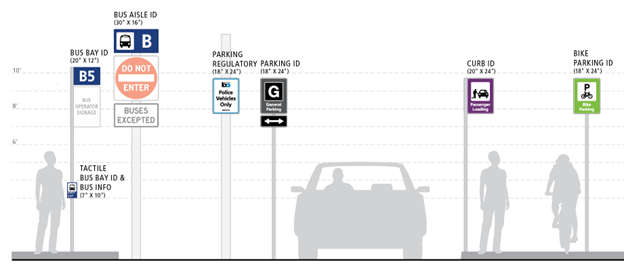
Identification signage for curb zones and bike parking (with color option)

Identification signage for parking (color option)

Identification signage for curb zones and bike parking (black/white option)
Note there is only a color option for accessibility related signage.

Identification signage for parking (black/white option)

Identification signage for bus aisles/areas and bus bays (color option)
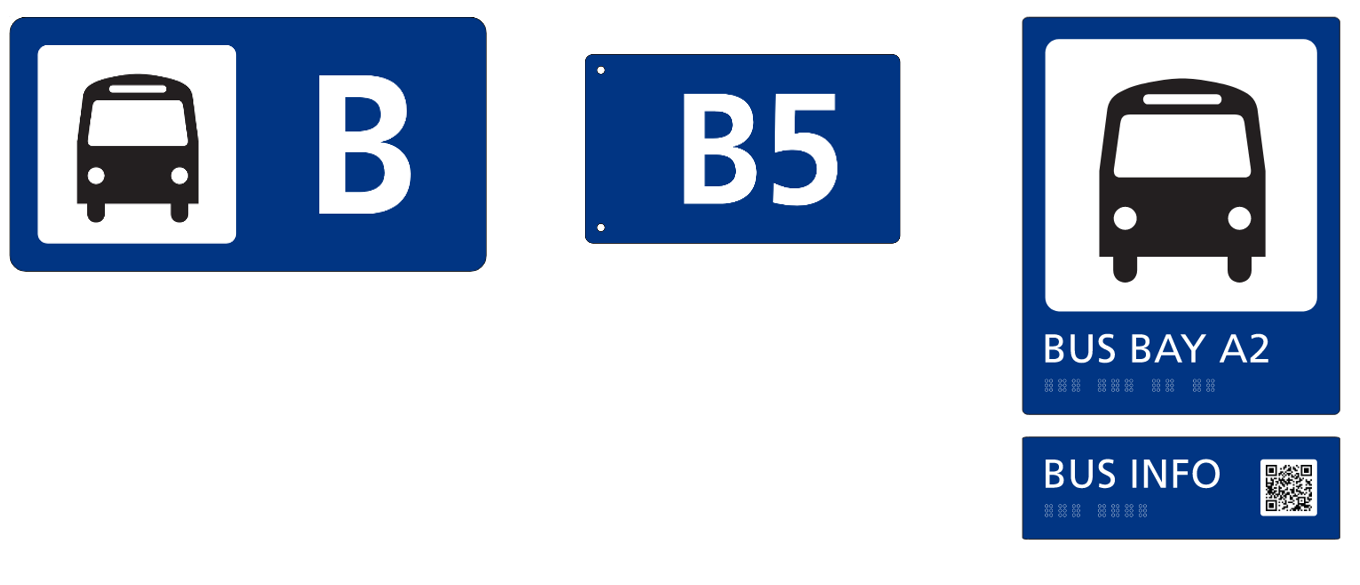
The tactile bus bay identification and bus information signs will feature raised bus icons, letters, braille, and QR Code box. The QR code on the bus information sign will link to real-time and potentially other bus information. Due to logistics involved in implementing and maintaining the QR code links, this information will be provided on a separate sign directly below the tactile bus bay number sign as a pilot.
Identification signage for bus aisles/areas and bus bays, including tactile bus bay identification and bus info signs (black/white option)
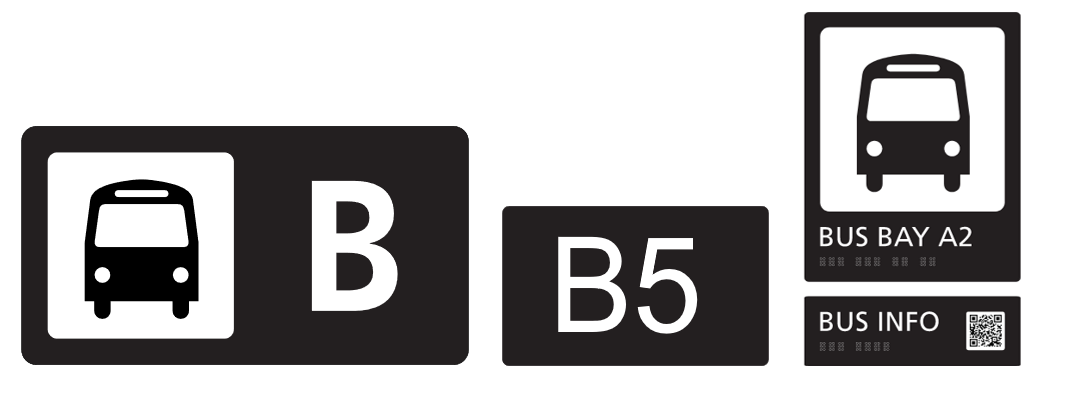
Informational and Wayfinding Signage
Informational signage provides additional information, instructions, or requirements for use of the facility. It includes parking and bus bay key signage.
Informational signage overview and mounting (color option)
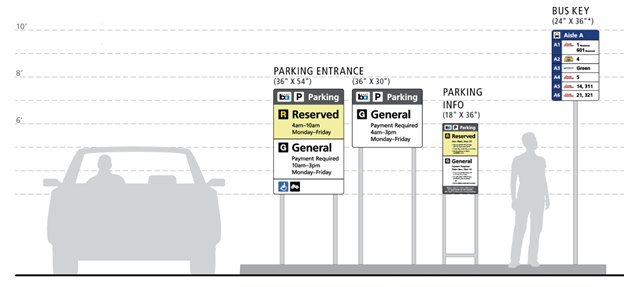
Wayfinding signage directs users to station access facilities and other key points of interest. It includes vehicular wayfinding and two types of pedestrian wayfinding signage.
Wayfinding signage overview and mounting (color option)
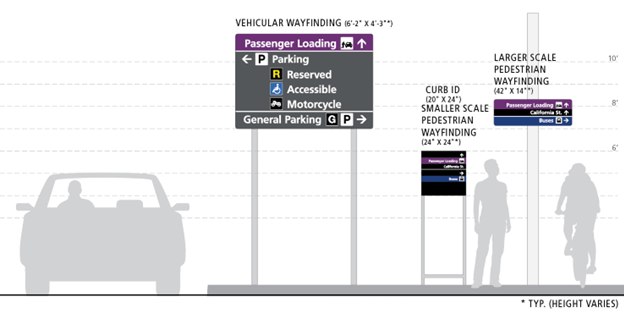
For more details on all types of signage, and how these designs were developed, download a copy of the draft Station Access Signage and Wayfinding Guidelines (SASWG) . Please provide your comments on these draft guidelines below.